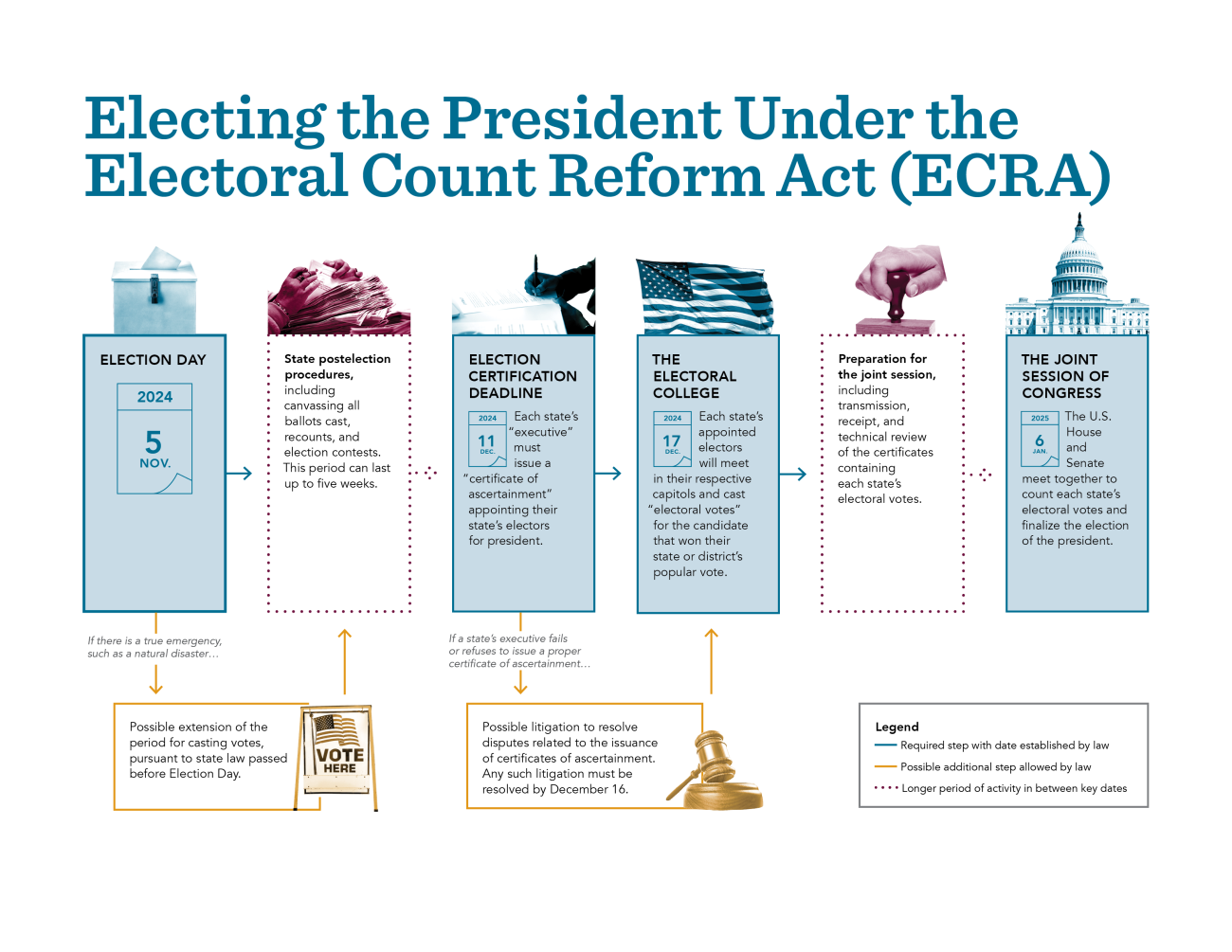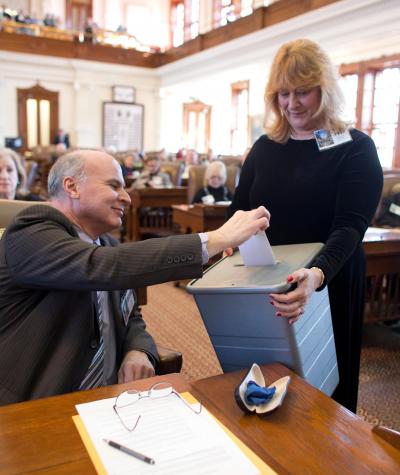Have you ever wondered why just a handful of states seem to determine the outcome of the presidential election?
The answer is simple: In the United States, we use a process known as the Electoral College to elect our president. Whoever gets the most votes for president across the country does not necessarily win the presidency; instead, a candidate must win a majority of the country’s electoral votes.
This process, which culminates in a winner getting or surpassing the necessary amount of 270 electoral votes, is why just a few states often determine the outcome of a presidential election.
How does the Electoral College work?
As outlined by Article II of the Constitution and the 12th Amendment, each state appoints individuals called “electors,” who are tasked with representing their state and casting “electoral votes” to select the president and vice president.
These electors are appointed according to state law, and since the 1800s, all states have appointed electors based on a popular vote in their state. When Americans cast their ballots for president, they are voting for a slate of electors who will act on their behalf.
The electors then cast electoral votes that mirror the winner of their state or district’s popular vote.
The Electoral College is not actually a single gathering. It is a collective set of meetings across all the states. This year, the Electoral College meets on December 17. After a state’s electors vote, they send their results to Congress.
The U.S. House and Senate then meet in a joint session to count each state’s electoral votes and confirm the winner of the presidential election.

Each state receives a number of electoral votes equal to its representation in Congress. The minimum number is three, which reflects the fact that each state gets two seats in the Senate and has at least one representative in the House.
Since the number of House members a state has is based on its population, the number of electoral votes each state gets is different.
Because of this, the Electoral College gives relatively more weight to small states with fewer people, like Wyoming, than it does big states with more people, like Texas.
With a population of over 39.5 million people, Texas has one elector for over 700,000 residents. Wyoming, however, only has a population of 576,850, giving the state one elector for every 182,283 residents. As a result, voters in Wyoming have more representation per elector in the Electoral College than voters in Texas.
Under this system, there are 538 electoral votes distributed across 50 states and Washington, D.C. A candidate needs a majority — at least 270 electoral votes — to win a presidential election.
In the rare event that no candidate wins a majority of the electoral votes, the House of Representatives is required to hold a “contingent election,” in which each state’s delegation gets a single vote for the next president.
Meanwhile, the Senate would elect the vice president, and each senator would have their own individual vote.
What are some exceptions to the Electoral College’s rules?
Territories such as Puerto Rico, Guam and the U.S. Virgin Islands do not have any appointed electors, so those American citizens are not eligible to vote in presidential elections. Although Washington, D.C. is not a state, it is allocated three Electoral College votes.
In addition, Maine and Nebraska are different from the rest of the states in how they allocate their electoral votes.
Maine and Nebraska appoint individual electors based on the winning candidate in each of their congressional districts, alongside two “at-large” electors based on their overall statewide popular vote.
The winner of the popular vote in each of these states gets two electoral votes and the winner of each congressional district gets one vote.
Can a candidate win the popular vote and still lose the election?
It is entirely possible for a presidential candidate to win the popular vote but still lose the election. The most recent case of this is 2016, when Hillary Clinton won the popular vote by almost three million votes, but Donald Trump secured the presidency with his Electoral College majority.

